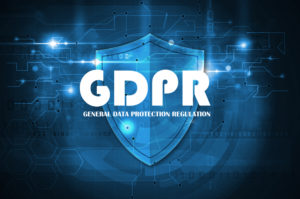
Will Privacy Kill Innovation?

(altafulla/Shutterstock)
It’s a tug of war. On one side: fast-moving technologies, new business practices, new digital behaviors, the democratization of analytics and the massive adoption of artificial intelligence (AI) and machine learning technologies. On the other side: the fundamental right of individuals to protect their privacy.
It’s a tug of war between data-driven innovation and privacy, and the balance is not right – privacy laws needed to be reinforced to match the changes driven by technological innovations. When it comes to privacy and personal data protection, the previous EU directive was drawn up in 1995. That was before the massive adoption of internet, social networking and e-commerce. Since then, the world has changed. It has become data-driven, and personal data is the new gold.
Personal data is everywhere, highly accessible, and technologies are making it easy to use this data. As a result, privacy has never been as exposed.
But awareness is building up. Massive data breaches and revelations about the inappropriate use of personal data, or the lack of protection for it, are bringing the question of privacy to the top of the headlines.
With the now-active General Data Protection Regulation (GDPR), the planets are aligning for a complete revamp of what privacy means, how personal data is handled, and what it means for organizations and their ability to innovate with data.
In this tug of war, the balance has started to even out.
Leaving Privacy Out of the Game
Innovating with data brings a lot of benefits to companies, people and society in general. But it can also expose the privacy of individuals in unprecedented ways.
The documentary Pre-Crime shows how police enforcement authorities in the United States are using large amounts of data and machine learning algorithms to predict the likelihood of somebody committing a crime or to identify places and times where a crime is likely to be committed. Surely, preventing a crime from happening is better than having to deal with the consequences of the crime.
But what if a person is wrongly targeted with preventive measures? Tagging someone as a potential high-risk criminal can have dramatic impacts on their life such as reputational damage, inability to get a loan, or inability to get job in a governmental agency. Who is accountable for making that decision? What logic did the program use to reach that conclusion? What data was used, and is it accurate? If not, how do we correct the data and get the person off the list?
The question of accountability is even more critical when using machine learning algorithms. The developer who coded the program most likely doesn’t know anything about crime or the socio-economic and psychological factors that lead to crime. He or she doesn’t even know what the program will eventually do, as it is designed to change over time, “learning” from the data.
Another example of disruptive innovations that raise privacy concerns is the recent breakthrough in face recognition technologies. Face recognition is not new; it has been used for some time now, in places such as border control, or by Facebook to flag people in our photo albums. But face recognition is now becoming mainstream, with exponential adoption across many domains and industries.
In parallel, the technology itself is getting better every day. For instance, research has shown that it is possible to reconstruct the face of a person based on his or her DNA. That can be very useful when it comes to identify the victims of an accident, or to catch the criminals using the DNA left behind. But the same techniques can be abused by authoritative regimes to monitor citizens’ whereabouts and track down political opponents.
In the same way as driving a car safely requires drivers to learn and respect the code of conduct and rules defined by society for road usage, innovating with data requires organizations to learn and respect the rules and regulations designed to protect the privacy of individuals.
Evening out the Game
Personal data is and remains a valuable asset. Organizations that manage to find the balance and stop the tug of war between innovation and data privacy will build a significant competitive edge.
Privacy-friendly analytics require the ability to manage and control the use of personal data across the end-to-end analytical life cycle: from data discovery and visualization to data preparation, model development, deployment and automated decision making. Privacy must be “baked in” at every step of the cycle, by design and by default. To achieve this, organizations who are looking to use personal data as a source of insight and competitive differentiator will need a complete and mature analytics platform.
Privacy is about to become another one of those labels that organizations are using to promote their brand, differentiate from their competitors, and influence consumers to buy their products or services.
There are many of those labels to choose from: fair trade, child Labor free, ecolabel, bio, Green Seal, Animal Welfare Approved, WWF, Waterwise, green IT, etc.
Meet the new kid on the block: data privacy.
Ending the Tug of War
Innovation and data privacy don’t have to be at odds with each other. Personal data protection regulations are already driving privacy-centric innovations. New products and services are being developed to help organizations use personal data without compromising the privacy of individuals.
Some examples of innovations driven by privacy requirements:
- Synthetic data generation using machine learning systems to help data scientists access personal data anonymously.
- Identity management fueled by Blockchain techniques, allowing to verify identities without exposing personal data.
- Personal data monetization allowing individuals to get value from sharing their personal data.
Far from killing innovation, privacy requirements and regulations are designed to boost the data economy and provide organizations with innovative ways to engage with customers and build competitive advantage. The successful organizations will be those who can see beyond the regulatory constraint and use it as a catalyst for digital transformation.
Don’t view it as a tug of war between data-driven innovation and privacy; embrace the opportunity they bring together.
About the author: With a long-lasting (and quite obsessive) passion for data, Olivier Penel strives to help organizations make the most of data, comply with data-driven regulations, fuel innovation with analytics, and create value from their most valuable asset: data. As a global leader at SAS for everything data management and privacy-related, Penel enjoys providing strategic guidance, and sharing best practices and experiences in using data governance and analytics as a catalyst for digital transformation.
Related Items:
The GDPR: An Artificial Intelligence Killer?
The Enlightening Side of GDPR Compliance
Ensuring Iron-Clad Algorithmic Accountability in the GDPR Era




























